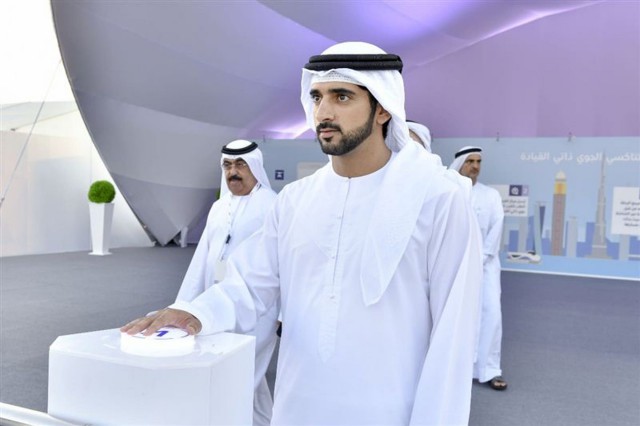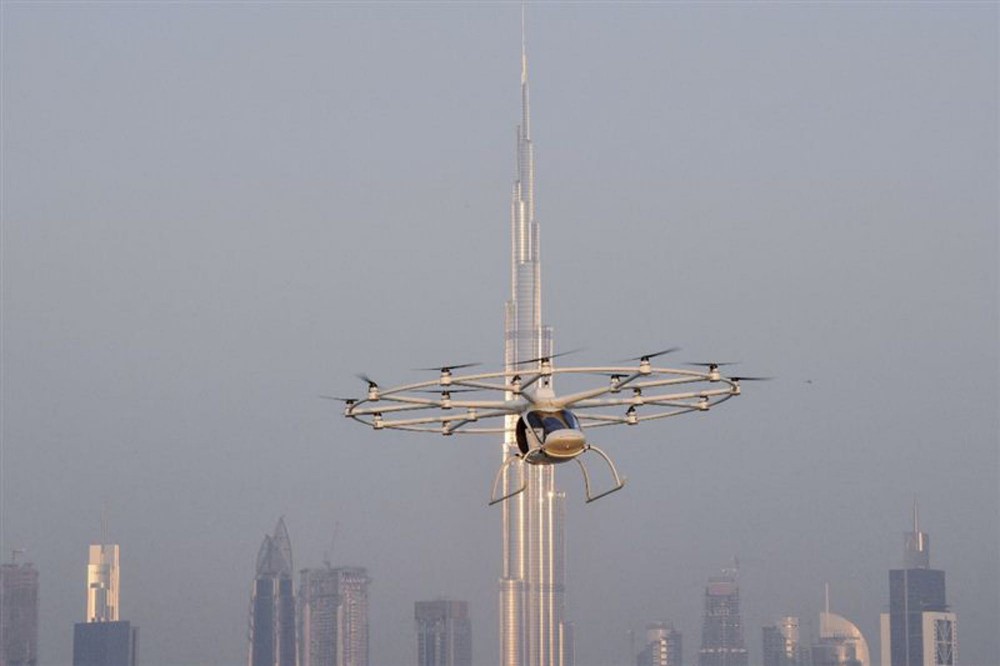The maiden concept flight of the Autonomous Air Taxi (AAT), the UAV that will eventually become world’s first self-flying taxi service set to be introduced by Dubai’s Roads and Transport Authority in 2022, took to the skies on Monday after the launch button was pressed by Dubai’s Crown Prince Sheikh Hamdan bin Mohammed Al Maktoum.
There had been a lot of speculation that the concept – using the German built Volocopter – was more pie in the sky than a real project, but yesterday’s maiden flight proved beyond all doubt that the intentions are real and that the technology works.

Sheikh Hamdan presses the button to launch the Volocopter watched by Dubai’s director general of civil Aviation Mohammed Ahli (Picture Gov’t of Dubai)
The test flight from Jumeirah Beach Park was considered a success.
“After the remarkable success of the first driverless metro in the region, we are glad to witness today the test flight of the Autonomous Air Taxi,” said Sheikh Hamdan. “This is another testament to our commitment to driving positive change. We are constantly exploring opportunities to serve the community and advance the prosperity and happiness of society.”
Dubai announced its plans to trial the Volocopter back in June. The emirate has plans to have , autonomous vehicles handle a quarter of all passenger journeys in the city by 2030. With low noise levels and utilising “clean” electricity, the Volocopter will have a maximum flight time of 30 minutes between charges. It will cruise at around 50 km/h although it has a maximum speed of double that.
“The Autonomous Air Taxi has a variety of unique features that include top security and safety standards, and multiple redundancies in all critical components such as propellers, motors, power source, electronics and flight controls,” said HE Mattar Al Tayer, Director-General and Chairman of Dubai’s Road and Transport Authority. “It is also fitted with optional emergency parachutes, nine independent battery systems, and a battery quick-charge and plug-in system, which takes two hours to reach full charge in the prototype version, a time that will be significantly reduced in the production version.”
It is expected to be capable of carrying two passengers although weights and landing sites have yet to be determined. The first date for flying live passengers is also not yet revealed.
Sources: Arabian Aerospace; NewsAZ

